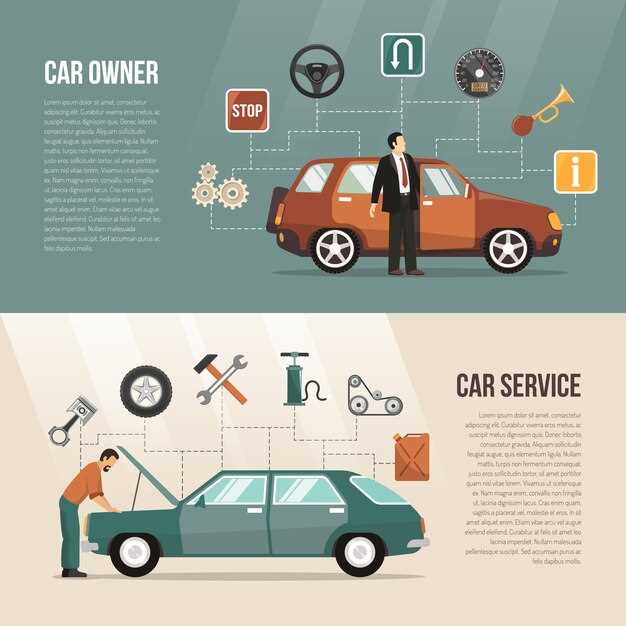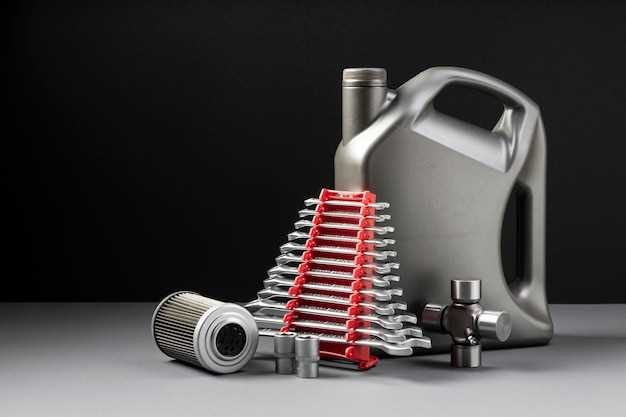
The choice between manual and automatic transmissions is a critical decision for many drivers, influencing both the driving experience and the vehicle’s performance. Each type of transmission has its own set of advantages and disadvantages, which can cater to different preferences and driving styles. Understanding these differences is essential for making an informed choice when purchasing a vehicle.
Manual transmissions offer a unique driving experience characterized by greater control over gear shifts. They require the driver to actively engage with the vehicle, allowing for a more involved and often more enjoyable driving experience. Enthusiasts often prefermanual gear systems because they can improve engine responsiveness and provide a stronger connection to the road. However, they also demand more physical effort and coordination, which can be a drawback in heavy traffic or complex driving conditions.
In contrast, automatic transmissions have gained popularity due to their ease of use and convenience. They automatically shift gears based on speed and engine performance, allowing drivers to focus more on the road rather than on gear changes. This makes them an attractive option for everyday commuters and those who prioritize comfort. However, some critics argue that automatics can diminish the driving experience by offering less engagement and control, particularly in performance-oriented situations.
In this article, we will delve deeper into the characteristics of both transmission types, examining their performance, maintenance, and impact on fuel efficiency. By the end, you will have a clearer understanding of which transmission type may be the best fit for your driving needs.
Key Differences in Driving Experience
When it comes to driving, the choice between manual and automatic transmissions significantly influences the overall experience. Each type offers distinct characteristics that cater to different preferences and driving styles.
Control and Engagement: Manual transmissions provide a heightened sense of control. Drivers can select gears based on their own judgment, allowing for a more engaged driving experience. Shifting gears manually often enhances the connection between the driver and the vehicle, making some drivers feel more in tune with the car’s performance.
Simplicity and Convenience: Automatic transmissions excel in convenience. With the ability to shift gears seamlessly and without driver input, they appeal to those who prefer a more relaxed driving experience. Automatic systems can handle complex driving conditions like stop-and-go traffic with ease, reducing fatigue and allowing drivers to focus more on the road.
Performance and Speed: In terms of performance, manual transmissions can offer quicker acceleration in skilled hands. Experienced drivers can optimize engine revs and gear changes for better speed. In contrast, modern automatics, especially dual-clutch systems, have become highly efficient and can shift gears faster than a human, sometimes leading to superior performance in racing scenarios.
Fuel Efficiency: Generally, manual transmissions have been associated with better fuel efficiency, as they allow for more precise control over the engine’s power band. However, advancements in automatic transmission technology, such as CVTs and more gears, have narrowed this gap significantly.
Learning Curve: Learning to drive a manual vehicle can be challenging. New drivers may struggle with clutch control and gear shifting, making the learning curve steeper. In contrast, automatics offer a more user-friendly experience, allowing new drivers to focus on steering and road awareness without the added complexity of gear changes.
Driving Conditions: The choice may also depend on typical driving conditions. Manual vehicles may be preferable for winding roads and performance driving, while automatics shine in urban environments where frequent stops are necessary, making each transmission better suited to specific contexts.
Ultimately, the driving experience is subject to personal preference. Enthusiasts may gravitate towards manual transmissions for the thrill of driving, while others may favor the ease of automatics for daily commutes.
Cost Analysis: Buying and Maintaining Each Transmission Type
When evaluating the cost implications of manual and automatic transmissions, it is important to consider both initial purchase prices and long-term maintenance expenses. The differences between these transmission types can significantly affect the overall cost of vehicle ownership.
Below is a comparative analysis of the costs associated with each transmission type, focusing on initial purchase price, maintenance costs, and potential repairs.
| Cost Factor | Manual Transmission | Automatic Transmission |
|---|---|---|
| Initial Purchase Price | Generally lower by $1,000 to $3,000 | Typically higher due to complexity |
| Fuel Efficiency | Better fuel economy (up to 15% more efficient) | Generally less efficient due to heavier components |
| Maintenance Costs | Lower, easier to maintain; fewer components | Higher, more complex system requiring specialized service |
| Repair Costs | Less expensive repairs due to simpler design | Repairs can be costly; potential for comprehensive failures |
| Longevity | Can last longer if driven properly | May require replacement or rebuild after 100,000 to 150,000 miles |
In summary, manual transmissions tend to have a lower purchase price and maintenance costs, making them a more economical choice for many drivers. On the other hand, automatic transmissions offer convenience and ease of use, but at a higher financial investment across both initial and ongoing expenses. Understanding these cost factors can help buyers make informed decisions based on their driving habits and budget considerations.
Impact on Fuel Efficiency: Manual vs Automatic

Fuel efficiency is a critical factor for many drivers when choosing between manual and automatic transmissions. The differences in design and operation significantly impact how each transmission type affects fuel consumption.
Here are some key considerations comparing fuel efficiency between manual and automatic transmissions:
- Transmission Design: Manuals typically have a simpler design without complex components, allowing for more direct control over the engine’s power output.
- Gear Ratios: Manual transmissions often feature a wider range of gear ratios, enabling drivers to optimize engine speed for fuel efficiency. This flexibility allows for lower RPMs at highway speeds, reducing fuel consumption.
- Driver Control: With a manual transmission, drivers can shift gears according to driving conditions, potentially enhancing fuel efficiency in certain scenarios. However, this requires skill and attention.
- Automatic Transmissions Evolution: Modern automatic transmissions, especially CVTs (Continuously Variable Transmissions) and dual-clutch systems, have improved significantly. They can now shift more efficiently than older models, optimizing fuel use without driver intervention.
- Average Fuel Economy: Studies show that manual vehicles typically achieve better fuel economy, often by 5-15%, compared to their automatic counterparts. Variations exist based on driving habits, vehicle type, and technology used in the automatic system.
While traditional manuals may outperform automatics in fuel efficiency, advancements in automatic transmission technology are closing the gap. Moreover, actual fuel savings depend greatly on driver habits and vehicle usage. Understanding these dynamics can help drivers make informed choices based on their priorities and driving styles.
Performance Factors: Acceleration and Control
Acceleration and control are two crucial performance factors that differentiate manual and automatic transmissions. The ability of a vehicle to accelerate effectively relies on how power is transferred from the engine to the wheels. Manual transmissions provide drivers with direct control over gear selection, allowing for precise power management. This enables skilled drivers to optimize engine revs for maximum acceleration at any given moment.
In contrast, automatic transmissions manage gear changes based on pre-programmed algorithms, which can sometimes result in delays during acceleration. However, modern automatics, especially dual-clutch systems, have made significant strides in performance, offering rapid gear shifts that can rival or even surpass those of manual transmissions in some scenarios.
Control is another aspect influenced by the type of transmission. Manual gearboxes allow for greater driver engagement and feedback, giving a sense of connection to the vehicle. This connection can be crucial in performance driving situations, where the driver can adapt their shifting patterns based on road conditions and personal driving style. Automatic transmissions often prioritize convenience and ease of use, which may sometimes lead to a lack of engagement for performance enthusiasts.
Moreover, the weight distribution and balance of a vehicle can also affect both acceleration and handling. Manual transmissions are generally lighter compared to their automatic counterparts, potentially improving overall vehicle dynamics. However, advancements in transmission technology are narrowing this gap, with newer automatic systems focusing on weight reduction while enhancing performance.
In summary, while manual transmissions provide unparalleled acceleration control and driver engagement, modern automatic transmissions have improved significantly, offering competitive performance in various driving conditions. The choice between the two ultimately depends on the driver’s preference for engagement versus convenience.
Learning Curve: How Easy Is It to Drive Each Type?
The learning curve for driving manual and automatic transmissions varies significantly, which can impact the choice for new drivers. Here’s a breakdown of how each type compares in terms of ease of learning:
Automatic Transmissions
Driving an automatic transmission is generally considered more straightforward for beginners. Key points include:
- No Clutch Pedal: Drivers only need to operate the accelerator and brake pedals, simplifying the process.
- Seamless Gear Shifts: The vehicle handles gear changes automatically, allowing drivers to focus on the road.
- Less Coordination Required: New drivers do not need to coordinate between clutch and shifting, reducing cognitive load during driving.
- Fewer Stall Risks: As there is no clutch to manage, the likelihood of stalling the vehicle is eliminated, increasing confidence for beginners.
Manual Transmissions
Learning to drive a manual transmission can be more challenging due to the additional skills required. Consider the following:
- Clutch Control: Drivers must learn to engage and disengage the clutch smoothly, which requires practice to master.
- Shifting Gears: Knowledge of optimal shifting points and timing is essential for performance and preserving the transmission’s lifespan.
- More Focus Needed: Much attention must be dedicated to coordinating the gear shifts with the clutch and accelerator, which can distract from overall driving.
- Stalling is Common: New drivers may experience stalls frequently, leading to frustration and reduced morale during the learning phase.
Conclusion
Overall, automatic transmissions offer a gentler learning curve, ideal for those new to driving. In contrast, manual transmissions demand additional coordination and practice, making them better suited for individuals willing to invest time in mastering the skill.
Resale Value and Market Trends for Both Transmissions
When it comes to resale value, automatic transmissions generally hold their value better than manual transmissions. This trend is largely influenced by consumer preferences, as the demand for vehicles with automatic transmissions continues to rise. Many drivers appreciate the convenience and ease of use that automatics provide, especially in urban environments where stop-and-go traffic is common.
Market trends indicate that vehicles equipped with automatic transmissions are often more sought after in the used car market. As manufacturers continue to innovate and improve automatic transmission technology, features like fuel efficiency and performance enhancements contribute to their appeal. This technological advancement reinforces the preference for automatic systems among buyers, further enhancing their resale potential.
Conversely, manual transmissions have seen a decline in popularity over the past decade. This is primarily due to the growing predominance of automatics in new vehicle sales, which leads to a smaller inventory of used manual vehicles. As a result, potential buyers of manual cars tend to be more niche, affecting their resale value negatively. While enthusiasts may still seek manual transmissions for the driving experience, the overall market for these vehicles is contracting.
Geographic factors also play a role in resale values. In regions where driving dynamics favor manual transmissions–such as rural areas or regions with winding roads–these vehicles may retain their value better. However, on a national scale, the overwhelming trend remains in favor of automatics.
As electric vehicles grow in popularity, both transmission types are experiencing new challenges. Many electric vehicles use a single-speed transmission, further reshaping the market landscape. This shift may partially diminish the resale value of traditional internal combustion engine vehicles, whether manual or automatic, as consumers begin to prioritize electric capabilities.
In summary, while both transmission types have their unique attributes, the prevailing market trend favors automatic transmissions in terms of resale value. The convenience and technological advancements associated with automatics are likely to continue influencing consumer preferences and market dynamics in the years to come.















